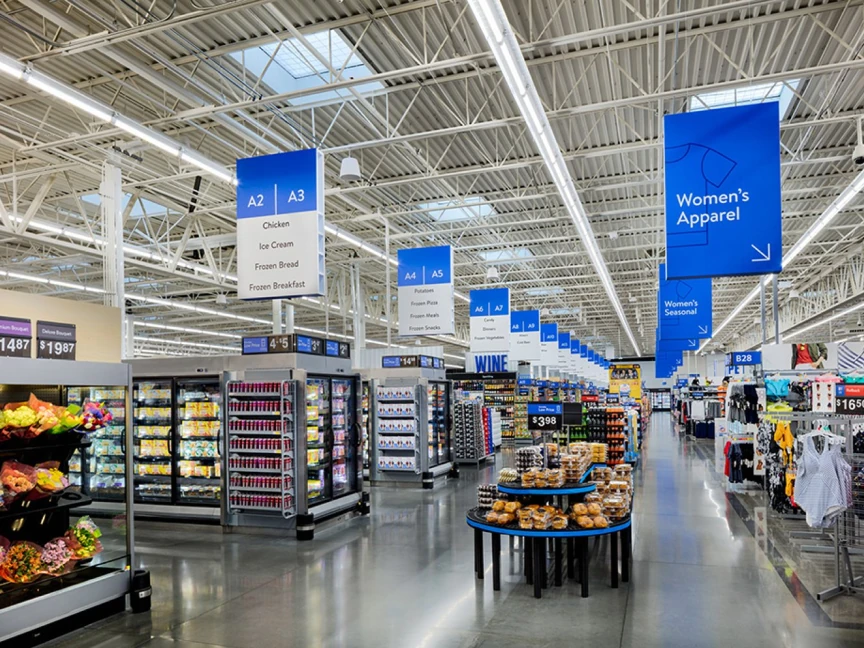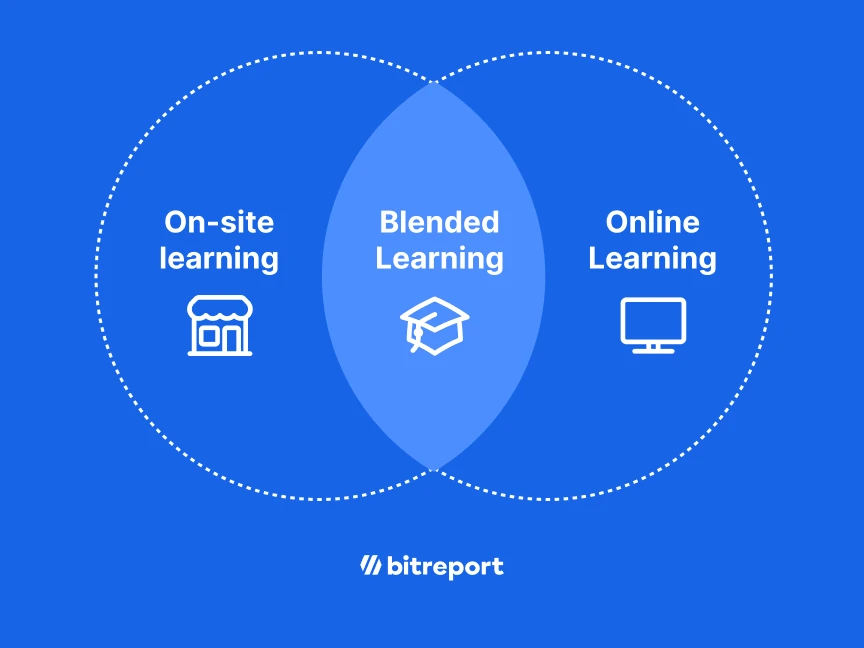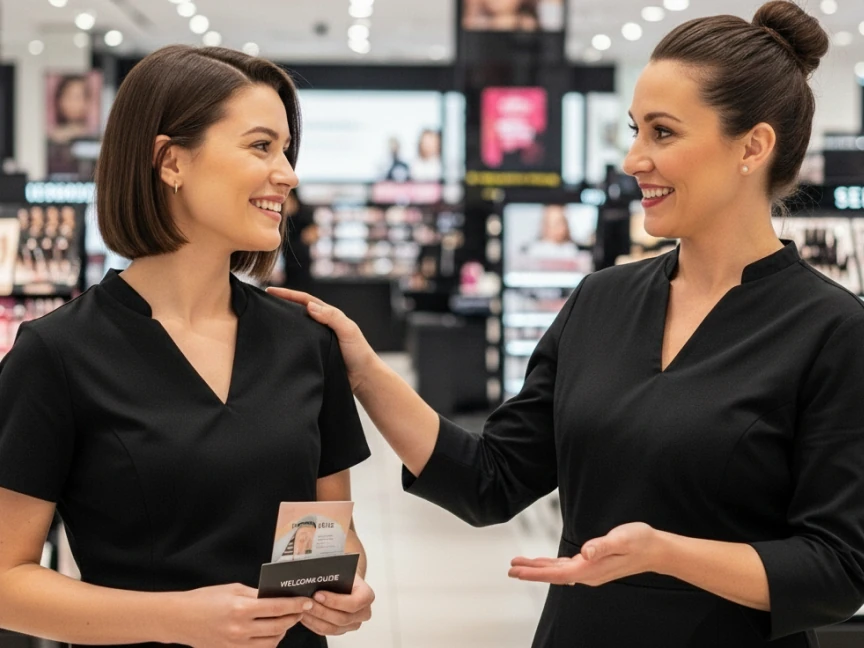Retail moves fast, and keeping up means training can’t be left on the back burner. With customer tastes changing constantly and staff turnover notoriously high, having a solid retail store training program is more of a necessity than a nice-to-have – especially for chains managing several locations and lots of employees.
Read: The Complete Guide to Retail Operations
A well-structured training program makes sure everyone is on the same page: from understanding company policies and brand culture to knowing exactly how to deliver standout customer service. This kind of foundation prevents the risk of employees feeling lost when faced with unexpected situations or handling things in a way that just doesn’t fit your brand.
The numbers show just how much this matters: employees who complete a well-structured onboarding program are actually 69% more likely to stay with the company for up to three years. That kind of retention is huge for consistency and team morale. Plus, research consistently finds that knowledgeable, friendly staff are the top reason shoppers enjoy an in-store experience.

Key Elements of a Successful Retail Training Program
To make sure that a training program is reliable, it should contain three key elements:
Quick onboarding: Efficiently training new hires to become fully-capable team members as soon as possible.
Product knowledge: Ensuring that employees have a deep understanding of your products, so they can give customers informed purchasing advice.
Sales and service skills: Making sure that everyone is polite to customers and guarantees consistent excellent customer experience.
Examples of Retail Store Training Programs
Gamification in retail training programs
Let’s talk about how gamification is changing the way we train in retail. Simply put, gamification means adding game-like features, like badges, leaderboards, and rewards, to training programs. It’s all about making learning more engaging, interactive, and, yes, even fun! When training feels like a game, retail staff are more likely to dive in, stay motivated, and pick up new skills faster.
Take Walmart as an example. They’ve introduced an app that lets employees practice handling real-life store situations through a simulation game. The game puts employees in charge of the dry goods department, challenging them with everyday manager tasks. As staff work through these scenarios, they can level up, earning recognition for their progress along the way.
With over 104,000 downloads, it’s clear that this approach is resonating with employees and helping develop their on-the-job skills in an engaging way.

Image source: Chain Store Age (CSA) – Walmart
Training through blended learning
Blended learning is exactly what it sounds like – a mix of online and offline training. It’s a favorite among retailers because it gives new hires the flexibility to learn at their own pace while still getting hands-on experience. The result? Employees get up to speed faster because they already know the basics, like the products and the company vibe, before they even hit the sales floor.
In retail, blended learning usually starts with watching product videos and taking interactive quizzes. Once that’s done, it’s time to hit the store for real-life training and workshops.

Take Best Buy, for example. They introduced blended learning as part of their growth strategy and commitment to great customer service. Their CEO even said that if you want customers to have a top-notch experience, your training program needs to be just as strong. Best Buy’s approach lasted five weeks and combined e-learning with job shadowing for their in-store product experts. It focused on key skills like sales and leadership – and it paid off. The program cut classroom time by 25% and saved the company over $1 million in training costs.
Quick onboarding + thorough training
It’s in everyone’s best interest to keep staff onboarding quick and productive. Employees become independent very quickly, bringing the cost of onboarding down. The best part? They can have constant training parallel to their everyday work.
Related read: Retail Onboarding Checklist: Step-by-Step for a Winning Team
Sephora is a standout example here. New team members are welcomed and integrated into the flow within their first week, learning the essentials fast. But the support doesn’t end there. Employee development continues through on-the-job training, interactive videos, and ongoing teamwork.

Daily quotas as a form of retail store training program
Let’s chat about daily quotas and how they can shake up the way retail teams learn and grow. Daily quotas are everywhere in retail, and for good reason. They’re often tied to incentives and bonuses that can really boost motivation. By giving sales staff clear daily targets, companies hope employees will get to know the products inside out and engage more with customers.
But daily quotas aren’t always perfect. While they push people to sell more, sometimes encouraging upselling, they also have a downside. If hitting that daily goal becomes the only thing on employees’ minds, there’s a risk they’ll focus on numbers and let other important things (like service quality) slide.
Take the example of Kjell & Company, a Swedish electronics retailer. Their sales team, about 350 people, used to work towards monthly quotas. That setup had a flaw: if someone fell behind early in the month, they’d often throw in the towel, figuring there was no way to catch up. So, the company switched to daily quotas instead.
What happened? The lower performers became more productive – they now had manageable goals every day, which helped keep them motivated and on track. On the flip side, the top performers’ productivity actually dropped a bit under the new system. So, while daily quotas can motivate and support struggling staff, it’s important to keep an eye on how they affect everybody, and not just those who need the most help.
Conclusion
With retail staff turnover as high as 60%, only the retailers who prioritize training will be equipped to put customer satisfaction in the center and turn everyday interactions into standout brand moments. In the end, great training programs don’t just teach skills – they build the foundation for retail excellence.
Bitreport helps you put training programs into action smoothly by simplifying task assignments and providing real-time progress tracking. This makes onboarding easier to monitor and supports a well-trained team ready to excel from day one.
Want to learn more? Let’s get in touch.




